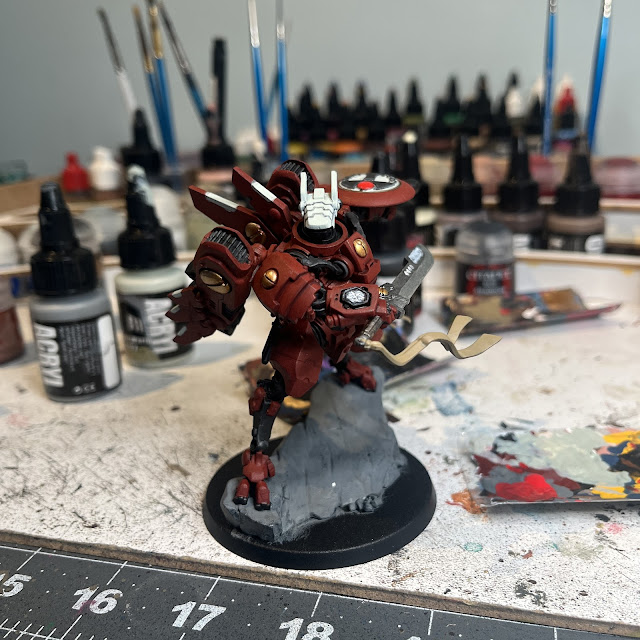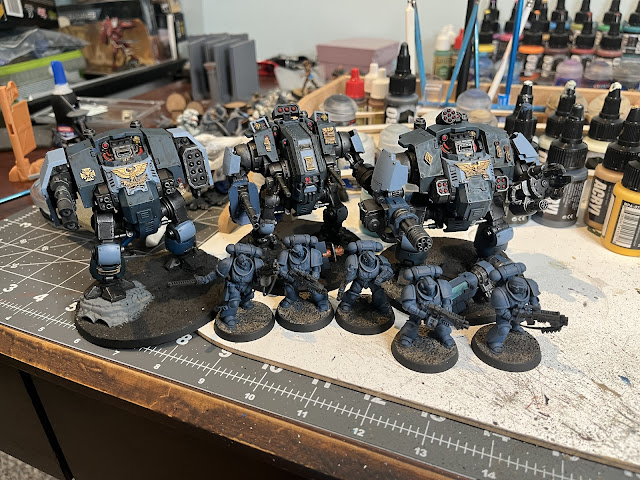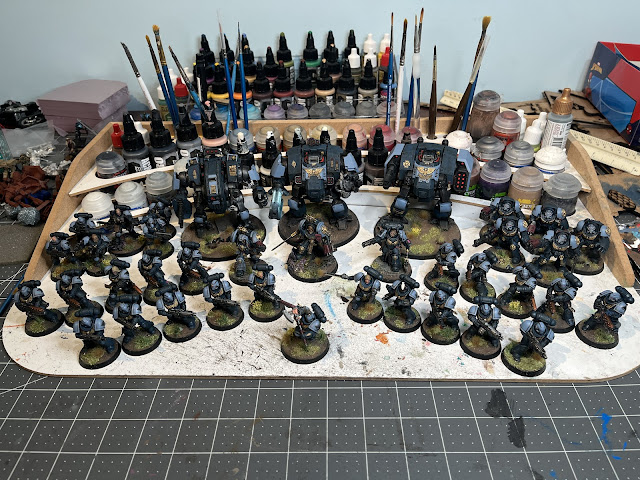Commander Farsight Project Diary
Commander Farsight, hero (and villian?) of the T'au Empire's Second Sphere Expansion. Armed with the Dawnblade, Commander Farsight is one of the few, if not the only, T'au Empire model that has any melee capability.
When I originally started my T'au Empire army, I chose a paint scheme of red and khaki for my custom crab inspired Cru'stea Sept. Looking at some of the canon Septs (A Sept being, more or less, what T'au call different factions), I really connected two of them.
The first Sept I latched on to was the N'dras Sept, a faction that was heavily dedicated to the stealth suit wing of the T'au Empire. The T'au stealth suits, both the new XV25 and the old XV15, the XV95 Ghostkeel, and the stealth suit hero Commander Shadowsun are my favorite parts of the T'au Empire range and lore. The N'dras Sept was a semi-official Sept which was dedicated to the stealth suit range and the development of the XV95 Ghostkeel. Images showed them in a light desaturated green color (a color I very much liked), but most of the painted armies showed them in a saturated green-blue color (a color I didn't like).
The next Sept I connected with was the dark red of the Farsight Enclaves. These fish-folk were the followers of Commander Farsight, a radical and aggressive T'au commander. I really liked the dark red color scheme, and some of the more samurai motives of this Sept, but it also felt too "edge-lordy" for my taste.
After some debate, I finally just settled on creating my own Sept with the dark red of the Farsight Enclaves, mixed with a khaki color. I also focused on building up my stealth suit range of which my Ghostkeel is my favorite T'au model (although I really have a soft spot for the old out-of-print metal XV15 stealth suits).
However, a few years ago, Games Workshop released a new Commander Shadowsun and Commander Farsight model, and I really do like both of them. While I still need to get the new Shadowsun (I have the old fine-cast model), I was gifted the Commander Farsight model for my birthday this year!
Commander Farsight would be the first T'au model I've painted in a long time. I really liked his sculpt and pose, so I decided to take my time to work on him and try out some new techniques. One of the new things I tried was panel lining with an enamel wash (Tamiya Panel Liner Black) to really try to get the model to pop. The panel liner was a little tricky to use cleanly, but had a great affect on some of the white and red panels. It probably took two passes to get a really dark black in the recesses, so I'm not sure I did everything correctly, but it easier than trying to panel line with an acrylic black wash. The hardest part of painting him was getting a smooth, bright white.
Below is a compilation of photos taken during painting of my Commander Farsight model.
Game photos, mid progress.





































